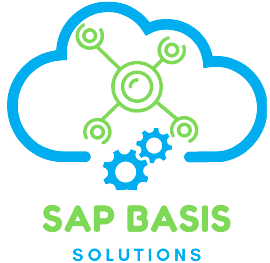Authorizations – It is one of the integral parts of an SAP environment. But, many wouldn’t have noticed the subtle changes which had a great impact on the migration of SAP ERP to SAP S/4HANA. Even with the lack of coverage, the evolution in authorization elements is apparent to anyone who has to use the new system, immediately. In this blog, we’ll reflect on the evolution of SAP ERP into SAP S/4HANA and its development on authorizations.
What is SAP ERP?
Back in 1993, SAP ERP was designed to be an Enterprise Resource Planning (ERP) system which utilized three distinct layers: database, application, and presentation for flexibility and scalability to support multiple Database Management Systems. In this initial release, client-server authorizations were used which eventually evolved into a system to limit the access to a particular set or subset of applications for a user group. The next step in SAP ERP’s evolution was SAP NetWeaver which was a powerful addition to any business as it integrated Java-based code alongside existing SAP applications.
Later in 2011, SAP S/4HANA was released which evolved the ERP system further with simplified data model and all related processes offering real-time analytics and massive extensibility. SAP S/4HANA is distinctly different from other ERPs as it offers a relational database management system (RDBMS). The RDBMS allows SAP to provide real-time functionalities like insights at every level of an organization. Although adapted for massively scaled-up rollout, SAP S/4HANA uses authorization and security layers similar to those used in SAP ERP.
SAP S/4HANA – Deployment strategies
With several deployment routes, SAP S/4HANA appeals to different deployment models for each company which can allow access to applications and layers within SAP S/4HANA. Businesses must consider the tradeoff between the level of flexibility and standardization while deploying S/4HANA. In general, Standard SAP S/4HANA deployment has low flexibility but is compatible with a wider variety of third-party applications. On the other hand a non-standard deployment offers the business a lot of scope in functionalities despite requiring customization in integrations with the core SAP systems.
Installation types
Ongoing, SAP ERP users will readily recognize the on-premise of installation, which offers more flexibility with the least amount of standardization of apps and services. Through this the business may choose to operate their on-premise install or prefer to have a third-party business operate it for them. But, with the advent of cloud computing and SaaS (Software-as-a-Service) this type of installation has seen a drop-off in popularity.
Cloud installation of SAP S/4HANA is a standard system which allows a variety of integration between third-party providers and the SAP backbone where the cloud provider manages authorization and security through SaaS solutions.
New Generation of SAP
Because of the sheer volume of cloud deployments, businesses aren’t limited to what they can do with their SAP installation, instead they are more flexible, powerful and scalable with easy integration from standardized cloud deployments. However, authorization and security differs in the online cloud environment because of sensitive data management. Adapting a business’s SAP security department will offer a happy balance between custom user groups, licenses, and cloud access when shifting to a Cloud SAP S/4HANA deployment. Connect with SAP BASIS Solution Services to know more!
